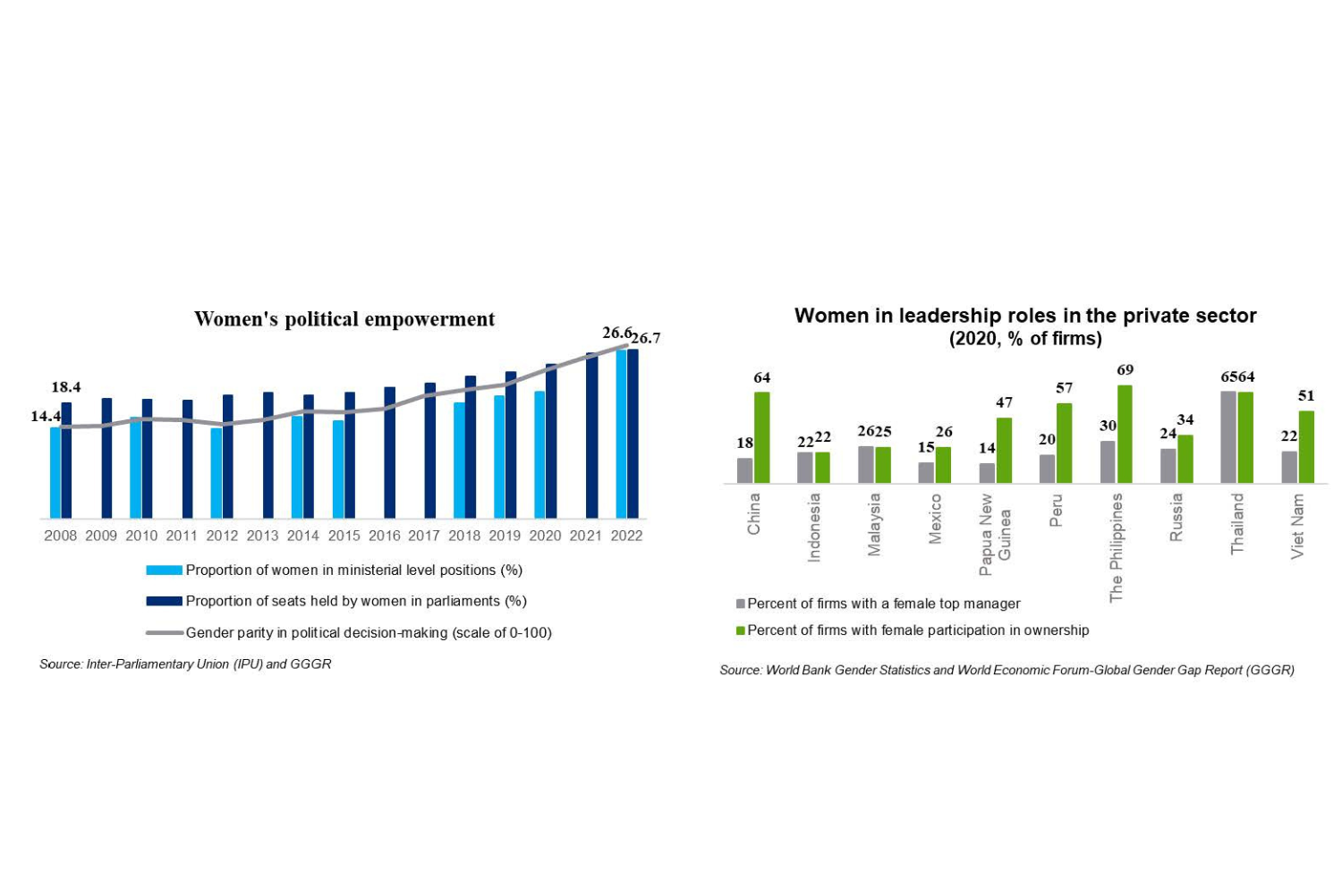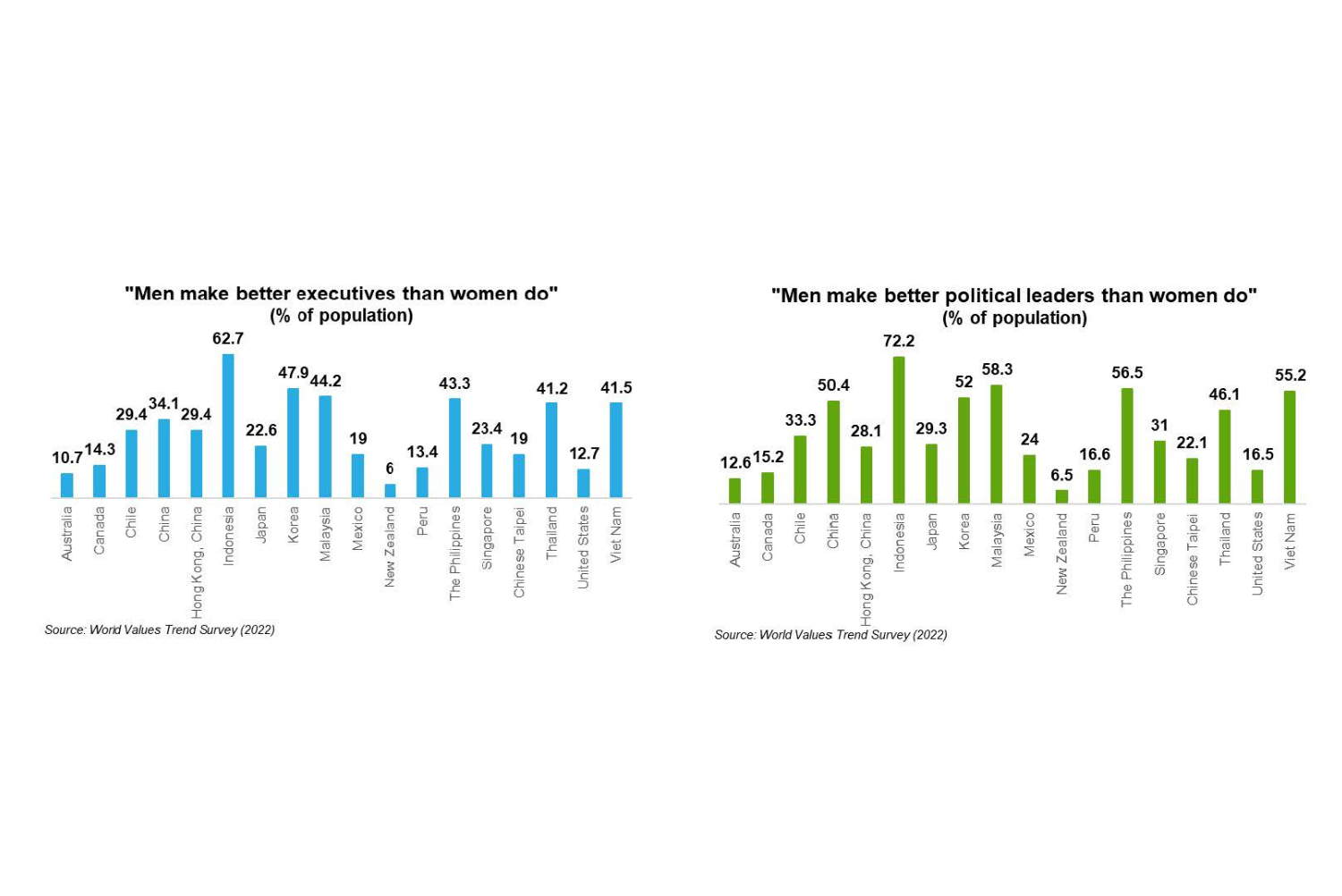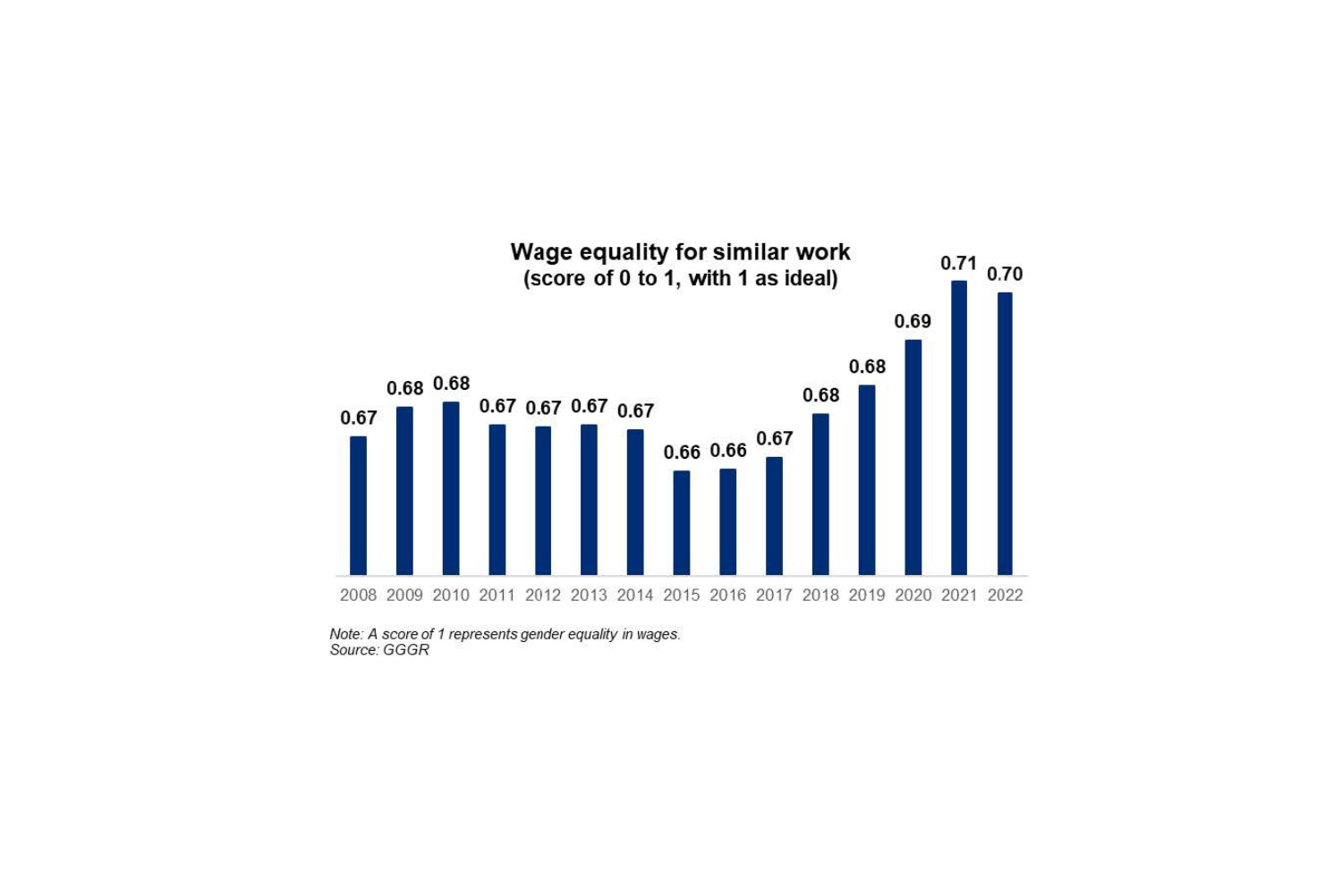Breaking Barriers: APEC Women in Leadership

APEC economies strengthened their commitment to enhance women’s access and opportunities through the La Serena Roadmap for Women and Inclusive Growth. The roadmap guides APEC’s agenda for women’s empowerment along four key targets: 1) establishing laws, policies, and regulations that prohibit discrimination on the basis of sex in employment access, opportunities and conditions; 2) establishing non-discrimination laws, policies and regulations that provide equal access to capital and credit for both sexes; 3) increasing the region's gender balance among science, technology, engineering and mathematics (STEM) graduates in tertiary education, and in positions in research and research and development (R&D); and 4) increasing the region’s gender balance in leadership positions, closing the gap for women.
The APEC Women and the Economy Dashboard tracks progress for these targets. The 2023 dashboard report highlights substantial strides in women’s access to finance and credit, particularly digital financial services; while restrictions in access to labor markets have been progressively removed by APEC economies. However, women’s participation in the areas of STEM, research and R&D is estimated to have remained below 35 percent in many APEC economies. An accurate picture of women in these fields could not be assessed due to insufficient data—an issue that has prevailed for two decades now.
Another persistent problem is women’s representation in leadership roles. In the political arena, women in the APEC region hold only 27 percent of seats in parliaments and ministerial positions—already the highest level achieved so far, but more needs to be done. Similarly, the proportion of women in management or ownership positions in the private sector has remained quite low for many years.  Identifying obstacles
Identifying obstacles
The persistent underrepresentation of women in key decision-making bodies impedes the formulation of policies that advance gender equality. It is imperative to delve into the major barriers that women face in their pursuit of leadership roles.
Sex-based biases and socio-cultural norms
Sex-based biases and stereotypes limit women’s potential, productivity and progress. Gender norms that assign specific roles and expectations for women can hamper their professional growth and restrict their ability to fully participate in leadership opportunities. Deep-rooted societal expectations often paint leadership as a predominantly male trait, leading to perceptions that women are less capable or suited for top leadership positions.
A World Values Trend Survey (2022) reveals that globally, 35 percent of the world population strongly agrees that men make better executives than women. In APEC, 33 percent of the region’s population thinks the same way although there are wide variations among individual member economies. Moreover, around 45 percent of the population across the world and in APEC strongly perceives men to be better political leaders than women. These biases undermine women's confidence and credibility, making it harder for them to break into leadership roles and be taken seriously once they do.
 Lack of role models
Lack of role models
A lack of female representation in leadership positions across APEC member economies contributes to a vicious cycle. For young girls, growing up in a society that has few women as leaders would mean having few role models and this could have negative consequences on girls’ mindsets and aspirations. Aspiring women leaders may struggle to envision themselves as policymakers, leading to a shortage of candidates and perpetuating the gender inequality. Breaking this cycle requires proactive efforts to identify and support talented women, widening opportunities for them to take on influential roles.
Limited access to networks and mentors
Networking and mentorship play a crucial role in career advancement, but women often face limited access to these opportunities. Traditional male-dominated networks may be less welcoming to women, leaving them with fewer connections to support their career growth. Access to mentors—who can offer guidance, sponsorship and advocacy—is also a key factor in career progression, and women may find it challenging to find suitable mentors within their industries.
Work-life balance challenges
Women often find themselves juggling multiple responsibilities, including work, family and caregiving. In the APEC region, women spend three times more than men doing unpaid care and domestic work, adversely affecting the time and energy for productive activities. The demanding nature of leadership roles can create significant work-life balance challenges, discouraging women from pursuing or accepting such positions. Flexible work arrangements and supportive family policies, particularly maternity and paternity leave to share in domestic responsibilities, are essential in helping women balance their personal and professional lives and embolden them to take on leadership responsibilities.
Wage inequality
The gender inequality in wages remains persistent, with women’s remuneration in the region only at 70 percent of men’s in 2022. Moreover, only 11 out of the 21 APEC economies have laws on equal remuneration for women and men for work of equal value. Lower pay and limited financial resources can hinder women's ability to access education, training and other resources necessary to develop and enhance their leadership skills. Bridging the gap and ensuring equal opportunities for women in human capital development can significantly boost their skills and increase their access to leadership roles. Enabling change
Enabling change
While the challenges are formidable, several strategies can be adopted to break down barriers and promote women's access to leadership roles in APEC. While priorities and resources may differ across APEC economies, it is high time for APEC economies to translate into action their commitment to the actions and targets set by the La Serena Roadmap.
Where feasible and appropriate, economies should consider implementing a gender perspective in education curricula, economic and development plans, policies on access to credit and employment, and representation in leadership positions at all levels of governance, among others.
Fostering public-private partnerships to create inclusive networks that provide women with access to mentors, leadership development programs, and other opportunities for professional growth is essential. In particular, investing in leadership development tailored to women's needs, providing skills training and coaching could improve women’s leadership capabilities.
Family-friendly policies such as maternity, paternity and parental leave, flexible working hours, and affordable caregiving services could greatly support women's work-life balance.
Countering age-old discriminatory attitudes and norms by raising awareness and integrating a gender perspective across all key areas of access and opportunities: education and skills development, finance and credit, employment, and leadership roles is crucial to changing mindsets. This in turn could help to challenge and overcome sex-based biases and stereotypes.
Achieving gender equality for inclusive growth
APEC recognizes that ensuring gender balance in leadership positions in the public and private spheres is not only about gender equality, but also a pathway towards inclusive and prosperous economies. Addressing barriers and adopting focused strategies can enable economies to harness women’s full potential, allowing them to equally contribute to growth that benefits all. The challenge is for APEC to initiate bold actions to break long-standing barriers today and bring the region to a future where women thrive in leadership roles.
***
Rhea Crisologo Hernando is a senior researcher at the APEC Policy Support Unit.

